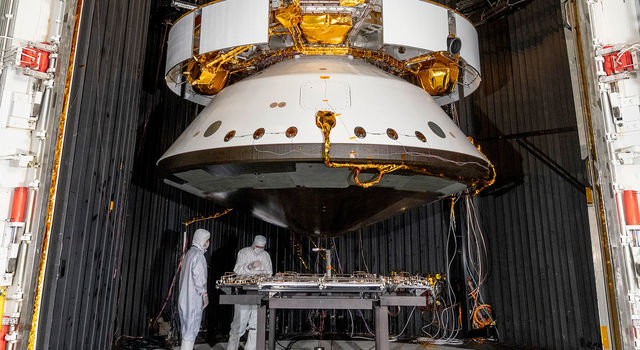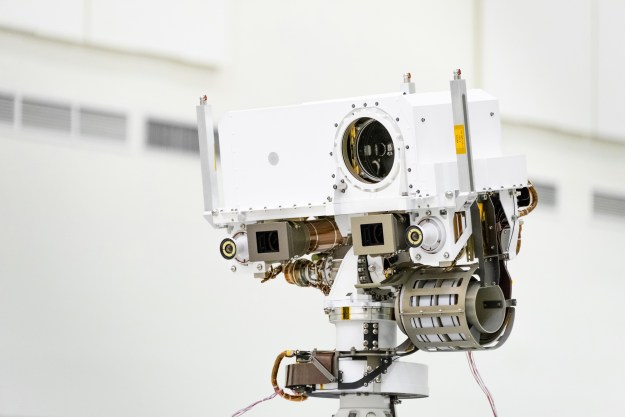
The spacecraft which will carry Curiosity’s little brother, the Mars 2020 rover, has been put through its paces in a further round of testing this week. The NASA Mars 2020 craft underwent acoustic and thermal vacuum (TVAC) tests which simulate the conditions of launch and of space to check it can withstand the extreme environments.
“First we blast it with sound to make sure nothing vibrates loose,” David Gruel, the Mars 2020 assembly, test, and launch operations manager at NASA’s Jet Propulsion Laboratory (JPL) explained in a statement. “Then, after a thorough examination, we ‘put it in space’ by placing the spacecraft in this huge vacuum chamber we have here at JPL. We pump out the atmosphere, then chill parts of it and cook others while testing the performance of the entire spacecraft.”
Tests were performed in a 25-foot-wide, 85-foot-tall chamber called the Space Simulator Facility. The near-vacuum environment created within the chamber requires a door that weighs 16 tons to withstand the pressure, and the chamber is chilled to -200 degrees Fahrenheit (-129 degrees Celsius) using liquid nitrogen. In addition, powerful xenon lamps shine on the craft inside the chamber to simulate the Sun’s rays.
The craft survived a grueling eight days of bombardment in the chamber and passed all the tests with no issues. “This is the most comprehensive stress test you can put a spacecraft through here on Earth,” Gruel said. “We flew in our simulated space environment for a week and a day, checking and rechecking the performance of every onboard system and subsystem. And everything looked great — which is a good thing, because next time this spacecraft stack hits a vacuum, it will be on its way to Mars for real.”
And when it comes time for the rover to find a location on Mars on which to land, it will have some help. A tool called the Lander Vision System (LVS) will descend to the surface and collect data about the terrain of the Jezero Crater, where the landing is planned. This week the LVS went through tests of its own, successfully gathering data and images from a test site in Death Valley, California.
Editors' Recommendations
- Mars will receive a new visitor in 100 days’ time
- Watch NASA’s Mars 2020 ‘movie trailer’ with Perseverance as the star
- Mars 2020 mission launch date has been pushed back again
- NASA shakes, rattles, and rolls Perseverance rover in Mars 2020 test
- This 1.8 billion-pixel photo of Mars took the Curiosity rover 4 days to shoot




